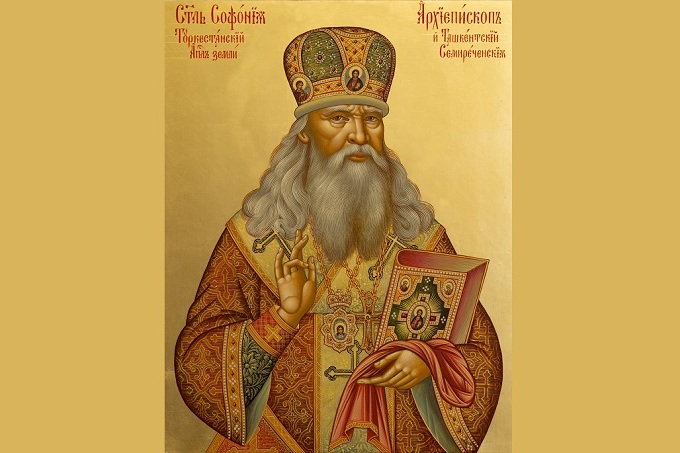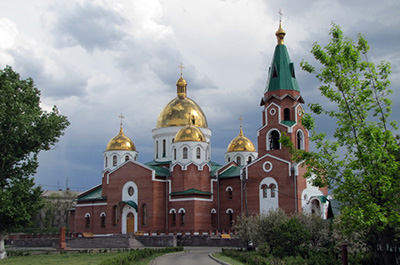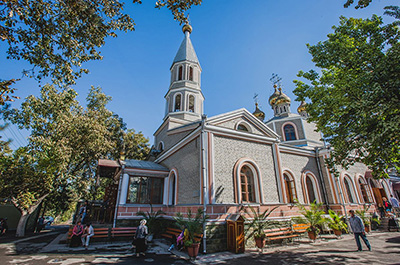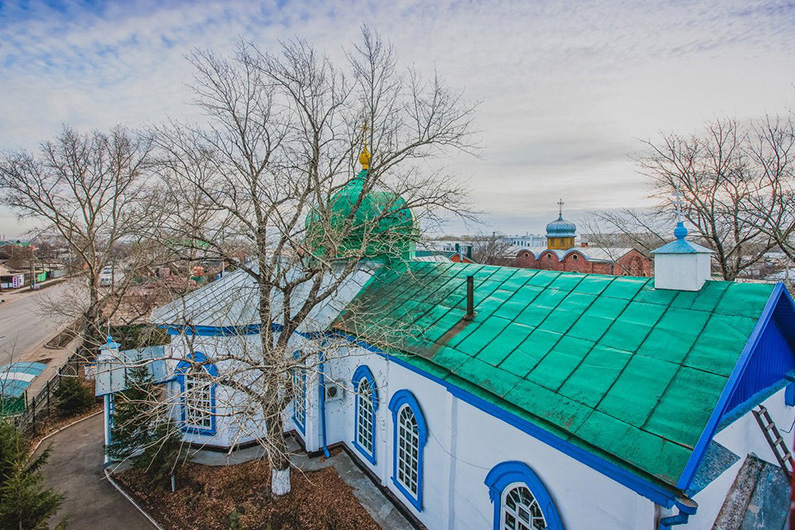
Sunday, marked by the memory of the Great Martyr Paraskeva-Pyatnitsa, Metropolitan Alexander celebrated the Liturgy in the church of the Representative Office of the Kazakhstan Metropolitan District
- 10.11.2024, 19:01
- Новости на английском языке

November 10, 2024 - the 20th week after Pentecost; the day of remembrance of the Great Martyr Paraskeva-Pyatnitsa, Saint Demetrius of Rostov and Saint Job of Pochaev.
Sunday, marked by the memory of saints revered by the Orthodox people, Metropolitan Alexander of Astana and Kazakhstan celebrated the Divine Liturgy in the church of the Holy Martyrs Vera, Nadezhda, Lyubov and Sophia at the Patriarchal Metochion of the City of Moscow - Representative Office of the Kazakhstan Metropolitan District.
In the church on Miusy there is an exact copy, "measure for measure", of the miraculous Feodorovskaya Icon of the Most Holy Theotokos. In the 13th century, Grand Duke Yaroslav Vsevolodovich blessed his son, Prince Alexander, nicknamed Nevsky, for the marriage with this ancient icon of the Mother of God. By order of the pious ruler, in memory of this event, the iconographers painted the image of the heavenly patroness of his wife, the Great Martyr Paraskeva Pyatnitsa, on the back of the icon. Saint Paraskeva is also depicted on the back of the copy, created with the blessing of Metropolitan Alexander by the outstanding icon painter, Honored Artist of the Russian Federation S.N. Sokolov.
Also in the St. Sophia Church, there is an icon of St. Job of Pochaev with part of his holy relics - a gift to the parish from the Assumption Pochaev Lavra.
The head of the Orthodox Church of Kazakhstan was assisted by: the key keeper of the Church of the Holy Martyrs Vera, Nadezhda, Lyubov and their mother Sophia, Hieromonk Anthony (Drobiazko); candidate of theology, doctor of medical sciences, professor hegumen Agafangel (Gagua); archpriest Pavel Vishnevsky, the key keeper of the Nikolskaya house church of the Scientific and Clinical Center of Otolaryngology of the Ministry of Health of the Russian Federation archpriest Lev Aznovaryan; rector of the church in the name of St. Righteous John of Kronstadt in the city of Lisakovsk archpriest Oleg Kalmykov, hieromonk Daniil (Makagon); deacon Anatoly Ledenev, deacon Roman Frolov.
The church choir sang under the direction of Anna Rozhnova.
The sermon on the communion verse was delivered by archpriest Lev Aznovaryan.
The service ended with the glorification of the Great Martyr Paraskeva-Pyatnitsa, Saint Demetrius of Rostov and Saint Job of Pochaev.
The head of the Metropolitan District warmly congratulated Deacon Anatoly Ledenev on the 10th anniversary of his ordination, wishing him mercy from the Lord, strength and many years of impeccable service to the Church of Christ.
Metropolitan Alexander addressed the congregation with a sermon. The hierarch told the parishioners about the special veneration of the Great Martyr Paraskeva in the Zailiysky region and the pious traditions associated with it.
According to ancient folk legends, in the 19th century, a few kilometers from Alma-Ata, on the site where the Life-Giving Spring Church is now located, an image of the Great Martyr Paraskeva appeared and a spring of healing water gushed out of the ground. In pre-revolutionary times, crowded religious processions were held to the holy spring. Thanks to prayers to the Great Martyr Paraskeva, in 1864, the devastating locust invasion stopped in the village of Sofiyskaya (now the city of Talgar) and the entire Zailiysky region. In 1908, a courtyard of the Vernoye Iversko-Serafimovsky Convent with a church in honor of the icon of the Mother of God "Life-Giving Spring" was founded near the spring. The revival of the church began in 2003.
Metropolitan Alexander told a story: "Once, a very elderly man came to see me and told me, when he was a little boy, he went to the holy spring with his grandmother to get water. "According to the prevailing tradition, pilgrims threw small coins - kopecks - into the water next to the miraculous spring. They sparkled and glittered in the water when the sun's rays fell on the bottom of the holy well," this man recalled. “And so, I couldn’t resist and took one coin while my grandmother wasn’t looking,” he confessed, “and I kept that coin all my life. I kept it, as a memory of my native places and childhood years.” After these words, he gave the kopeck with the double-headed eagle to the church museum.”





















